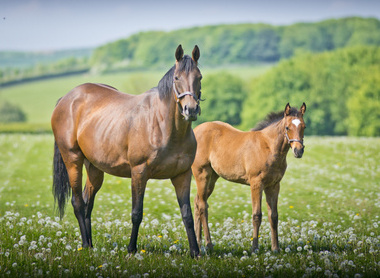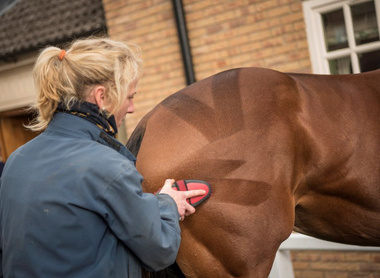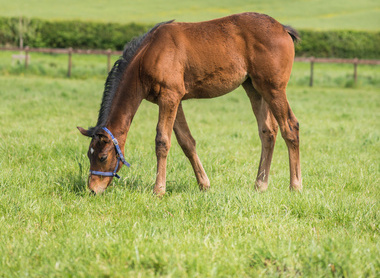
Welfare
Thoroughbred welfare is a key priority of the TBA. The Association works with a number of organisations across the equine sector to promote high standards of care through guidance and education.
This section includes information on the Thoroughbred breeding sector's equine welfare guidelines, sales guidelines and the responsibilities of owners and breeders at various stages of the horse's life cycle.
Responsibilities for thoroughbreds at various life stages
The TBA has set out below some information and guidance on the key considerations for Thoroughbred breeders at all stages of the horse’s life cycle.
GENERAL WELFARE
Breeders have a particular responsibility for the welfare of their mares and youngstock as well as for the breed – maintaining the welfare and reputation of the Thoroughbred and continuing the work which has created this very special horse.
The vast majority of breeders set high standards in protecting the welfare of the horses in their ownership or care. Many breeders are actively involved in caring for their horses – often finding the contact a significant part of their enjoyment and frequently forming bonds that override any commercial considerations. Irrespective of their involvement in the day-to-day care, many breeders also show long standing commitment to the broodmares in their ownership – often breeding through numerous generations from a foundation mare or mares.
Despite its high standards – and the benefit of many of its initiatives spreading far beyond the bloodstock industry – the racing and breeding industry also recognises that it is not only important to have high welfare standards but also to be able to communicate this outside of the breeding community; every participant can play a role in achieving both.
In addition to the normal responsibility of ownership to ensure the well being of their horses, breeders have an additional responsibility to produce horses that can fulfil a role – fundamentally determined by soundness, ability and, in many instances, temperament. No breeding operation or mating plan can guarantee success but breeding horses with little prospect of being sound and athletic does no favours for the breeder, the industry or, most importantly, the horse.
Experiencing the highs and lows is intrinsic to the ownership of mares and their young-stock; faced with the fact that they may have stock (young or old) which has limited or no value to the racing or breeding industries, breeders have a responsibility to consider their options carefully. For adult horses, key questions in this process will be if they are sound enough to continue an active life or continue to breed whilst for youngsters, the key questions become if they have the potential for an active life or to breed. In both cases, it is worth considering if their temperament restricts their options for new roles.
In many cases there is some residual market within the bloodstock industry – often in countries where the standard or demands of racing are lower than the domestic market. Taking a horse to auction can be expensive and the sale price might not cover the immediate costs, but it is often the best place to find the buyers and secure a future for individuals with limited ability.
OPTIONS OUTSIDE OF THE THOROUGHBRED BREEDING & RACING INDUSTRY
If there is no demand within the bloodstock market, there may be opportunity in other equestrian sectors; soundness, and temperament, remain important requirements but numerous thoroughbreds with limited or no racing ability or potential have cut out useful lives, and sometimes excelled, in eventing, show-jumping, polo, endurance riding, showing and a host of other equestrian activities. Their appeal has been enhanced by the initiatives of Retraining of Racehorses (RoR) which is an industry-funded charity created to support former racehorses by, among other activities, providing competitive opportunities for them.
Logically, values will be limited by the time it will take before they are ready to participate in their new roles which, in many cases, will not be until they are 4 or 5; it is important to be pragmatic about youngsters – especially foals and yearlings – and accept that they are unlikely to have any value; the benefit is finding an appropriate home where the individual has a future.
Gelding colts, whilst an additional expense, is a sensible procedure to assist with re-homing whilst reducing potential stress and additional management requirements for individuals with no realistic prospect of entering stud. Whilst they are even harder to place, a broodmare who is fertile but has failed to produce stock with any racing ability may still have appeal to breeders for other disciplines (sometimes as a recipient for an embryo transfer) but the demand is very limited.
Beyond competitive activities – and with temperament likely to take precedence – we are blessed with a significant number of individuals who simply want a horse to care for with, perhaps, some gentle hacking. There are also limited opportunities for specific individuals in the role of Equine Assisted Therapy.
The markets for competitive and non-competitive re-homers are less easy to find but a visit to the RoR website and a few targeted telephone calls to local veterinary practices, Pony Club DC’s or Chief Instructors, Riding Club Committees, feed merchants, farriers or other equestrian organisations may be able to identify a suitable opportunity. However, it is important to recognise that protecting a horse’s welfare can only be assured if ownership is retained; if there is any uncertainty about the sustainability or professionalism of the home being offered then euthanasia may be the most responsible option.
RETIREMENT OPTIONS
Many breeders have the facilities to provide a home and a good quality of care for horses who are retired but remain fit and healthy. For breeders without the land or capacity to care for retired stock, there are professional establishments specialising in retirement / grass livery but it should be noted that they may not be able to cater for horses with health conditions requiring specific management; the contacts above may help to find suitable options.
END OF LIFE CONSIDERATIONS
Euthanasia forms a part of any welfare policy and it is an important principle that, when completed carefully and sympathetically to end incurable suffering, it provides the best option for any horse, young or old. The old saying “better a week too early than a day too late” carries an important message. For those who are not familiar or are uncomfortable with the process, several websites provide good information on the options and considerations including World Horse Welfare and the British Horse Society.
Whilst providing ongoing care for their horse or horses should always be the aim of any owner and remains their responsibility, in practice it has to be accepted that their personal circumstances may dictate that it is neither practical nor, in some cases, in the best interests of the horse. A responsible policy will aim to ensure that every avenue is considered in preference to euthanasia but euthanasia remains preferable to a decline in the care that the horse receives, or asking it to fulfil a role for which it is clearly unsuitable. Visit the Horse Welfare Board webpage for further information or read their euthanasia guidelines and decision tree.
Foal Scoping Guidance
E-Passport User Guide


